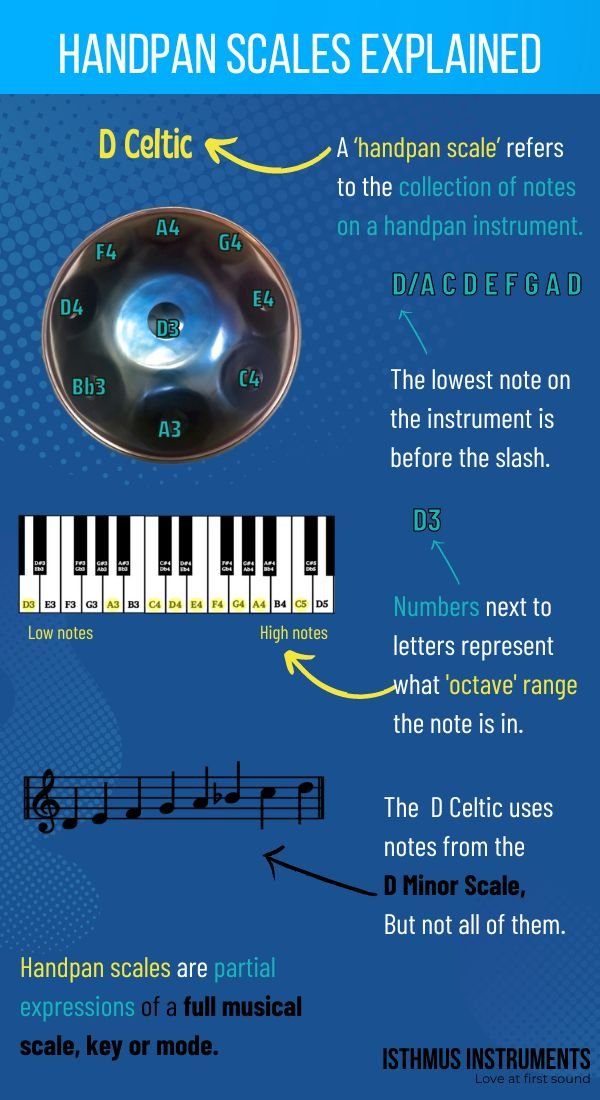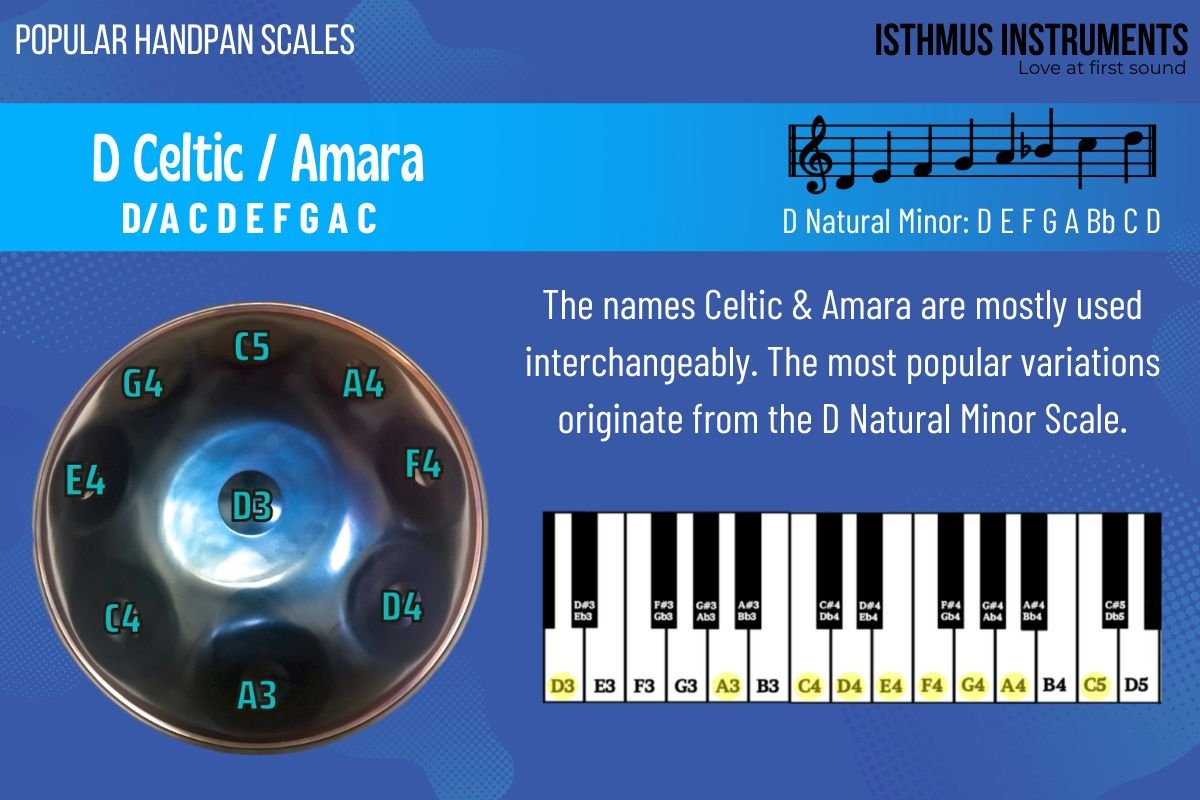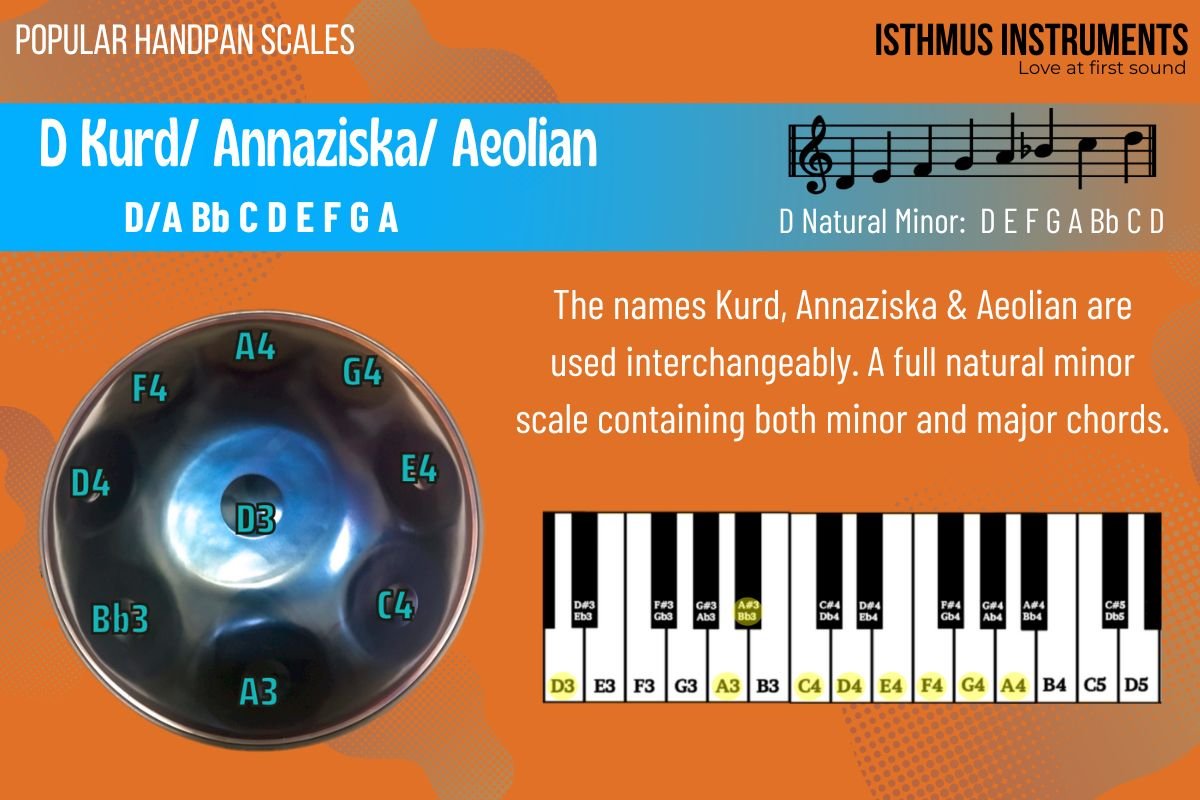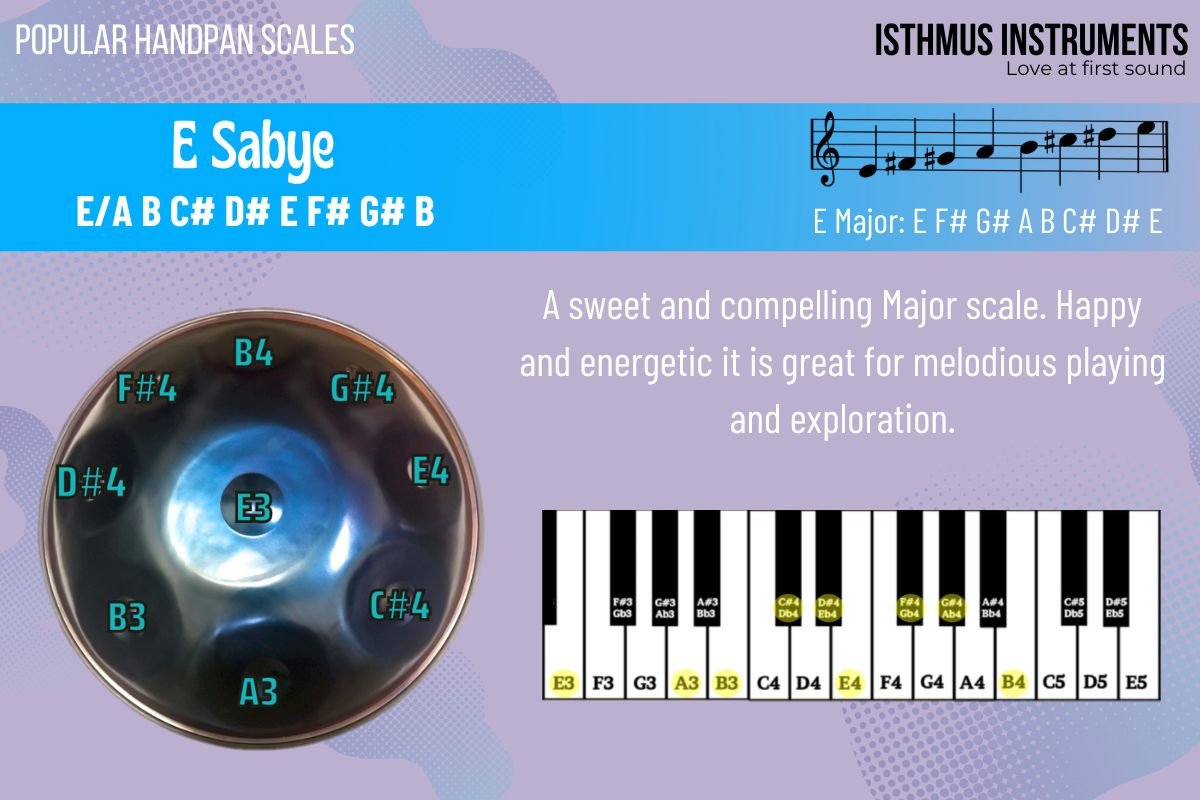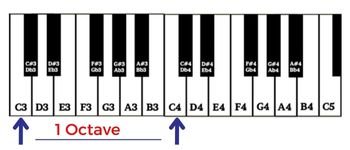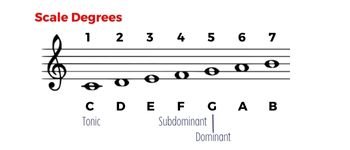What is a Handpan Scale? + 11 Popular Handpan Scales List
A ‘handpan scale’ refers to the collection of notes on a handpan instrument. ‘Handpan scales’ are usually partial expressions of a full musical scale, key, or mode.
This guide walks you through the ins and outs of handpan scales, covering details that include:
Handpan Scale Names Explained
Handpan ‘scale names’ originate from their makers in two ways. Either as a poetic description, meant to convey the feeling and essence of each unique instrument or from traditional musical scales.
It’s possible to find handpans named after traditional musical scales like:
Major, as in the E Major Handpan
Minor, such as the B Minor Handpan and the E Minor Handpan
Akebono, like the Akebono Handpan
Raga Desh, including the C# Raga Desh
Pentatonic, such as the F Pentatonic Handpan
Other handpans are named after one of the seven musical modes, like the:
Mixolydian handpan
Poetic names for handpans, like:
A Brief History of Handpan Scales & Handpan Scale Names
In the early 2000s, there were only a few handpan builders in the world making instruments. During that time, those handpan makers exercised artistic naming conventions for their new instrument creations.
Handpans are limited in their space and the number of notes that can be built. And it’s these constraints that have dictated the following — most full musical scales do not fully fit on the instrument.
Furthermore, the simplicity of a curated, limited collection is (in our opinion) what makes handpans so fascinating and fun. In those early days of instrument building, most instruments were crafted with only 7 tonefields or 8 total notes. That is far less than we are used to seeing today!
Still, from the beginning, handpans were always built as partial expressions of a full musical scale key or mode. Since handpans were often incomplete in a traditional scale way, it was very natural for builders to ascribe their own names for various collections of notes. In fact, handpan scale names were:
Often chosen to convey the feeling or essence of each unique instrument
Sometimes chosen from personal inspirations
Today, many popular handpan scale names can be directly attributed to:
Pantheon Steel
Echo Sound Sculpture
PanArt
Kyle Cox, maker of the Halo, may have been one of the first to ascribe poetic names to handpans. Over the years, some of the more popular names from Pantheon Steel have included:
Aegean
La Sirena
Oxalis
Equinox
Ezhan, maker of Echo Sound Sculpture, along with PanArt, makers of the Hang, also originated many other popular handpan scale names, such as:
Pygmy
Integral
Sabye or SaByeD
Annaziska
Over time, more handpan makers have emerged, continuing the tradition of naming these percussion instruments after their collections of notes. Soon, the growing collection of handpan scales exploded. In fact, after cataloging many handpan scales over the years, we have documented well over 200 varieties of handpan scales and different handpan scale names since the instrument's inception.
From 2010 through today, there have been a few ‘sticky’ handpan scales that have been popular in the handpan community and with makers. Additionally, many handpan makers continue in the footsteps of others when building requested instruments, embracing the identity and naming conventions that were created before them. Some of the largest contributors to handpan scale names have been:
Pantheon Steel, maker of the Halo handpan and credited with using the term “handpan”
PanArt, maker of the Hang
With this history, it’s easy to see why the most popular handpan scales are constantly in flux. Still, there are some standout handpan scale varieties that have stood the test of time.
11 Popular Handpan Scales List
Here are some of the most popular handpan scales. We’ve done our best to highlight the notable features of these scales including their origins. If you want to understand more about music theory, including some of the terms we mention, skip to the Understanding Music Scales to Grow Your Handpan Scale Knowledge section below.
Celtic/Amara:
The names Celtic & Amara are mostly used interchangeably. This is one of the most common handpan scales available today. Almost every handpan maker has a variation of the Celtic or Amara scale in their store. This scale has a minor tonality and reflects its origin from the historic Celtic scale which is in dorian mode. In dorian mode the 6th scale degree is raised but for the Celtic scale the 6th scale degree gets excluded. This presents you with a scale that has a minor feel which captivates listeners and is intuitive for beginner players. Excluding the 6th scale degree, this scale feels minor, & captivates listeners.
D Celtic handpan scale: D/ A C D E F G A C or D/ A C D E F G A D
Name origin: Traditional Celtic music, Pantheon Steel, Echo Sound Sculpture
Scale origin: D natural minor scale, D E F G A Bb C
Other Celtic Variations
B/ B C# D E F# A B C#
C/ G Bb C D Eb F G C
E/ B D E F# G A B D
Eb/ Bb Db Eb F Gb Ab Bb Db
2. Kurd/Annaziska/Aeolian:
The names Kurd, Annaziska & Aeolian are often used interchangeably. Most commonly, Annaziska is used for handpans with a C# center note, while Kurd mostly refers to handpans with a D or E center note. Aeolian has been used to describe handpans with a C center note or a C# center note. Sam Maher made the C# Annaziska handpan scale popular with his NYC subway handpan video. Like all handpan scales, actual notes may vary, so to be sure to check the notes!
This scale name refers to a fully diatonic natural minor scale containing both minor and major chords, making it a popular choice for beginners to advanced players. With a complete minor scale you have a range of emotions to play with, and players can explore building haunting and beautiful melodies easily. Although used interchangeably, these three names all have different origins.
Kurd - This name comes from Arabic music tradition and is an Iraqian scale that has been adapted for handpan.
Annaziska - This name was created by the handpan community and it refers to that natural minor scale.
Aeolian - The ‘mode’ name for a natural minor scale. Was originally used in 14th century plainchant and is a modal scale to this day. It refers to the natural minor scale not in a modal sense for the handpan.
D Kurd handpan scale: D/ A Bb C D E F G A
Name origin: Arabic music, SPB by Victor Levinson
Scale origin: Aeolian Mode, D E F G A Bb C D
Other Kurd Variations
C/ G Ab Bb C D Eb F G
C#/ G# A B C# D# E F# G#
E/ B C D E F# G A B
3. Pygmy:
The Pygmy scale was one of the first handpan scales built and has remained as one of the most popular scales today. It is a form of pentatonic scale called Dorian pentatonic which consists of five different notes instead of the usual seven notes. This places the scale in a very unique place because it sits somewhere between a major and a minor scale. The pentatonic scale is arguably the most used scale in music as it has been found in almost all ancient and modern cultures around the world. Even if you think you don’t know it, watch this and sing along! Something about the pentatonic scale resonates in all of us. The Pygmy has that quality making it an intriguing, complex, and truly magical scale. The first G Pygmy handpan was built by PanArt. Subsequently, handpan makers built lower and lower scales as time went on. Building this scale with one lower center tone led to the development and use of the term ‘F Low Pygmy’. However, today this can be confusing, as handpan makers sometimes build this an entire octave lower, with center tones as deep as F2. Most used scale in music, the pentatonic scale resonates in all of us, making it intriguing, complex and magical feeling.
F Pygmy handpan scale: F/ G Ab C Eb F G Ab C
Name origin: Panart
Scale origin: F minor Pentatonic Scale, F Ab Bb C Eb
Other Pygmy Variations
F2 Low/ F G Ab C Eb F G Ab
G/ A Bb D F G A Bb D
B/ C# D F# A B C# D F#
C#/ F# G# A C# E F# G# A
4. Integral:
A natural minor scale variation, first made popular by PanArt with the Integral Hang®. In D minor, it is similar to the Celtic/Annaziska/Kurd scales we previously discussed. So what’s different about this minor scale? In this version of the natural minor scale the 4th scale degree, G, gets excluded. As one of the earliest scales this helps exemplify how beautiful and complex crafting a scale can be. By changing just one note you can evoke a whole different feel or vibe from the handpan and set of notes chosen. This is why there are many similar scales with only one or two note differences. Compare the D Kurd vs. D Celtic vs. D Integral - what difference do you hear? Excluding the fourth scale degree, this hexatonic variation exhibits a different character than others in the same key.
D Integral handpan scale: D/A Bb C D E F A C
Name origin: Panart
Scale origin: D natural minor scale, D E F G A Bb C D
Other Integral Variations
D/ A Bb C D E F A
F/ C Db Eb F G Ab C Db
C#/ G# A B C# D# E G#
5. Hijaz:
Handpans with Hijaz in their scale name have roots from the Arabic Maqamat. The Maqam Hijaz (scale system) consists of two scale fragments (or Jins in the Arabic tradition) which are 3-5 notes in length. The 2 here are Jins Hijaz and Jins Nahawand. On the handpan, the Romanian Hijaz is the most popular version, which turns the Hijaz scale into a Harmonic minor scale.
Different from a natural minor scale because it has a raised 7th scale degree. This raised 7th opens the possibility to a brilliant Major chord and completely changes the feel from a natural minor. This scale was another early handpan scale and has stayed on many makers' build list. The raised 7th gives you an Arabic and Middle Eastern feel which can help players achieve a more driving and exciting music experience. The Romanian Hijaz is unique in that it starts on the 4th scale degree of the Jins Hijaz. This means that an E Romanian Hijaz handpan is actually an E Harmonic minor scale that encompasses the Hijaz maqam in B. For example: an E Romanian Hijaz handpan is an E Harmonic minor scale that incorporates the Jins Hijaz + Jins Nahawand scale in B. This scale has a dreamlike quality to it drawing listeners in like a mirage in the desert.
E Romanian handpan scale: E/A B C D# E F# G B
Name origin: Middle Eastern music
Scale origin: Jins Hijaz + Jins Nahawand, B C D# E F# G A B
Other Hijaz Variations
A/ D E F G# A B C E
D/ G A Bb C# D E F A
F/ Bb C Db E F G Ab C
6. La Sirena:
The La Sirena scale was conceived at Pantheon Steel. Spanish for “the mermaid” this enchanting scale draws you in like a siren at sea. Evoking a charming and alluring feel this scale has been made popular by handpan player and performer Kabecao.This scale is a hexatonic scale in Dorian mode consisting of a minor 3rd and 7th but has a Major 6th. Very similar to the natural minor scale except for the raised 6th scale degree. Again changing just one note creates a whole new scale that offers a different feel from the closely similar scales. In dorian mode, a raised 6th scale degree and an omitted 4th creates an enchanting soundscape.
E La Sirena handpan scale: E/ G B C# D E F# G B
Name origin: Pantheon Steel
Scale origin: Dorian mode scale, E F# G A B C# D E
Other La Sirena Variations
D/ F A B C D E F A
Eb/ Gb Bb C Db Eb F Gb Bb
F/ Ab C D Eb F G Ab C
7. Equinox:
This is another hexatonic minor scale envisioned by Pantheon Steel. Similar to the Integral, Kurd, and Aeolian scales. This scale excludes the 4th scale degree like the Integral scale but it starts with a minor 3rd between the center and first note. This really helps root the minor feel and rounds the scale out a little more. Once again having one note difference changes the overall feel of the instrument. Made popular by Pantheon this scale is widely available from makers worldwide.
E Equinox handpan scale: E/ G B C D E F# G B
Name origin: Pantheon Steel
Scale origin: Minor Scale, E F# G A B C D
Other Equinox Variations
F/ Ab C Db Eb F G Ab C
F#/ A C# D E F# G# A C#
G/ Bb D Eb F G A Bb D
8. Mystic:
The Mystic scale is one of our best sellers at Isthmus Instruments. This scale starts low and ends higher on a minor 7th, which gives a dark and mysterious feel. It’s another hexatonic minor scale similar to Integral because they exclude the 4th scale degree. The difference between the two is the last note! The Mystic scale ends on the minor 7th which leaves some tension and mystery. This dark and mystical scale will surely take you on a journey as a player with much to explore.
C# Mystic handpan scale: C#/ G# A C# D# E G# B
Name origin: Unknown but given for the character of the scale.
Scale origin: C# Minor scale, C# D# E F# G# B
Other Mystic Variations
D/ A Bb D E F A C
E/ B C E F# G B D
Eb/ Bb B Eb F Gb Bb Db
9. Sabye:
The Sabye or SabyeD scale is a version of the Major scale. It was named by Ezahn at Echo Sound Sculptures. This is one of our favorite scales at Isthmus Instruments. Offering a number of great chords this happy and energetic scale is great for melodious playing. It is a sweet and compelling scale offering the player chords to underlie their melody. This heptatonic scale is a versatile chord builder, featuring a perfect fourth jump from the center to first tone.
E Sabye handpan scale: E/ A B C# D# E F# G# B
Name origin: Echo Sound Sculpture
Scale origin: Major scale, E F# G# A B C# D# E
Other Sabye Variations
C/ F G A B C D E G
F/ Bb C D E F G A C
D/ G A B C# D E F# A
10. Jibuk:
A mixolydian scale, where the 7th scale degree is flat and the Ding is the 5th or dominant note of the key. Close to a major scale other than the flat 7th giving it a jazzy and lively feel. A more unique scale than most it is always interesting to have the Ding not be the tonal center and here we have the 5th. Having a sharpened or flattened 7th, the leading tone, also makes for a fascinating and exciting scale.
F# Jibuk handpan scale: F#/ B C# D# E F# G# A B
Name origin: Panart or Pantheon Steel
Scale origin: Mixolydian mode scale, B C# D# E F# G# A B
Other Jibuk Variations
E/ A B C# D E F# G A
F/ Bb C D Eb F G Ab Bb
G/ C D E F G A Bb C
11. Akebono:
The Akebono scale is a pentatonic scale that comes from the Japanese diatonic scale In. The pentatonic scale that comes from In is called the Miyako-Bushi scale. This is used on traditional Japanese instruments like the Shamisen, which you might have seen in the movie Kubo and the Two Strings. This scale gives an alluring and mesmerizing feel. The intervals and relationships of the notes on this scale create a lot of dissonance, yet it can pair well with minor scales.
F# Akebono handpan scale: F#/ B C# D F# G B C# D
Name origin: Japanese music
Scale origin: Pentatonic scale, F# G# A# C# D#
Other Akebono Variations
G/ C D Eb G Ab C D Eb
E/ A B C E F A B C
D/ G A Bb D Eb G A Bb
Understanding Music Scales to Grow Your Handpan Scale Knowledge
Let’s dive into some basic music theory about scales, so you can better understand how different handpan scales work.
Music scales evoke different types of feelings and can be used in music to create moods or reflect emotions. In fact:
Scales are composed of notes.
Notes are sounds that are made when an object vibrates. When you pluck a guitar string or sing a note, you are creating vibrations that make sound.
These vibrations have different frequencies and designate a certain note.
In Western music, we have 12 different notes alphabetically labeled from A to G. Take a look at the keyboard image below. The black keys may seem confusing, but it's quite simple.
The notes that make up black keys are either called:
Sharp: Designated with a number or hashtag sign (#), sharps raise a note by one half step.
Flat: Labeled with a lowercase b, flats lower a note by one half step.
The symbol for sharp or flat always goes after the note letter.
Now, look all the way to the left and focus on notes C, C#/Db, D. The black key above C is called C#, but it's also below D so it’s also called Db. C# and Db are the same pitch but have different names which we call enharmonic in music.
Understanding Musical Keys & Key Signatures
The musical key you are playing in will determine which name you use for the note. Each musical key has different numbers of sharps and flats. You might have heard a musician ask another musician, “hey what key are we in?” They are trying to determine the key of the music they are playing, which will tell them which notes are sharp or flat. So, when they play their instrument they will play well with other musicians.
To familiarize yourself with the different sharps and flats in each key, you can look up the musical key signatures. Key signatures are the arrangement of sharps or flats placed in the beginning of a music score to indicate which notes are going to be played sharp or flat for that piece of music. Key signatures are something musicians memorize over time.
Now, if you start at C on the left and count twelve notes, you will land on B. And what comes after that? C — it starts over!
An octave is the distance from one note to the next same note either lower or higher. If you were to play these two C notes on a piano the one on the right would be higher in pitch while the left would be lower.
Western Musical Scales
Common Western scales are a series of seven notes in a musical key. A scale that has a total of seven notes and consists of 5 whole steps and 2 half steps within one octave is called a diatonic scale. Diatonic scales are the foundation of Western music.
Scales consist of notes that are either a half step away or a whole step away from the previous note. Looking at the keyboard, a half step goes from one note to the one right next to it; C to C# is a half step.
For a whole step, you skip one note and go to the next. For example, C to D is a whole step because we skipped C#.
So if we look at one of the most common and simple scales, like C Major, we can see how it is made up of whole and half steps. C Major on the keyboard uses all white keys. C, D, E, F, G, A, B. Here is a picture of the whole and half steps consisting of a C Major scale.
Now, we can also label these note letters as scale degrees, marked by a ^ above the number. So, in a C Major scale, C is scale degree 1 through B or scale degree 7.
These scale degrees all have a certain function within the scale, the most important of which are the:
Tonic: The first scale degree is the tonic, which gives the scale its tonal center. This is the note of the final resolution.
Subdominant: The fourth scale degree is the subdominant. As its name implies, this is a lower dominant to the fifth scale degree.
Dominant: The dominant is the fifth scale degree. It’s second most important to the tonic.
How Handpan Names Can Reflect Scale Degrees
It's important to understand scale degrees for this next part. Some of our handpans are named after musical modes like our ‘C Aeolian’ sound model.
Other handpans might not be named after a specific mode, but the notes that make up the handpan can be classified as one of the modal scales. Modes are a series of seven diatonic scales based on any Major scale.
If we take our C Major scale again — C, D, E, F, G, A, B — and use these same pitches, we can create seven more scales just by starting on a different scale degree! In fact, starting on:
Scale degree 1 or C is a C Major scale, but it’s also called C Ionian mode.
Scale degree 2 or D can be played in D Dorian mode, including D, E, F, G, A, B, C, D.
The list of modes with scale degrees is:
Ionian
Dorian
Phrygian
Lydian
Mixolydian
Aeolian
Locrian
At Isthmus, we offer a C Aeolian handpan. Aeolian, also called the natural minor scale, is a scale starting on the 6th scale degree.
So, we have to work a little backward here. We have to find the Major scale that has C as the 6th scale degree. To do that, you need to understand all the Major musical keys.
While we have discussed music keys above, we did not go into specific key signatures. So, in what scale is C the 6th scale degree?
Well, counting backward starting on C, we land on note E. But in the key of E Major C is sharp, C#. Based on our understanding of the different key signatures, we know that:
C is the 6th scale degree of Eb (E flat).
Eb Major has three flats in the scale: Bb, Eb, and Ab.
To play the ‘C Aeolian’ scale, we play an Eb Major scale starting on C.
Therefore our ‘C Aeolian’ scale is C, D, Eb, F, G, Ab, Bb.
We hope this explanation of music theory and handpan scales will help you understand the different names of handpan scales and exactly what they mean.
How to Get Expert Help Choosing a Handpan Scale
As fun as it can be to learn about the best handpan scales, you can easily get expert help and answers regarding how to choose a handpan scale by contacting us. Our small team of expert handpan makers and builders are ready to help, anytime!

